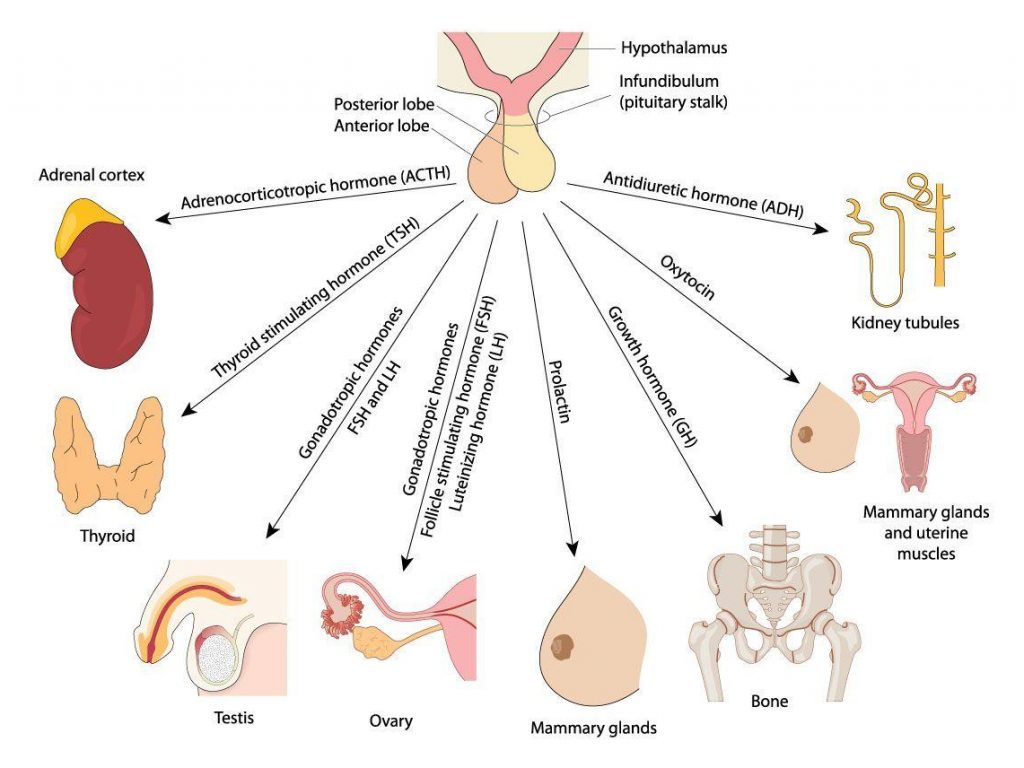Hormone Testing

The Effect of Hormones in Fertility and Pregnancy
Many complex processes occur within the body. In order to control these processes, different parts of the body need to communicate with each other. Hormones are a group of chemicals that are involved with internal communication. They are transported via the blood which grants them access to every part of the body. This is why one hormone can have so many varying effects.
Oestrogen and Progesterone Govern the Menstrual Cycle
The main two hormones produced in the ovaries and relating to fertility are Oestrogen and Progesterone. Together they govern the menstrual cycle, which is divided into two phases:
1. The Follicular Phase (governed by Oestrogen).
2. The Luteal Phase (governed by Progesterone).
The names of these phases are given by the state of the shell that encases and protects the ovum (egg cell). ‘Follicular’ refers to the shell that surrounds the ovum. When encased by the shell, the entire unit is known as a follicle. In this state, oestrogen is produced by the follicle. When the egg is ejected (just before fertilisation), the collapsed shell is known as the corpus luteum. It is at this point that the second phase begins. Now the corpus luteum will secrete progesterone until either the egg is implanted or menstruation occurs.
Effects of Oestrogen and Progesterone
Oestrogen
- Causes a thickening of the endometrium
- Affects uterine musculature
- Increases blood circulation
- Increases breast tissue
- Helps with bone density
Progesterone
- Maintains placenta function
- Maintenance of uterine wall.
- Softening of the cartilage and relaxing of smooth muscle (aided by the hormone, Relaxin)
Follicular Stimulating Hormone (FSH) and Luteinising Hormone (LH)
There are another two hormones affecting fertility, these ones produced by the Anterior Pituitary Gland, to add to the complexity of the monthly cycle. This gland in the brain secretes various hormones known as trophic hormones, all of which relate to tissue growth. The ones most relevant for fertility are FSH and LH. FSH is present in the follicular phase (early in the cycle). It helps with the growth of the follicles, which in turn release more oestrogen, which in turn acts on the anterior pituitary gland to release yet more FSH.
This feedback loop continues for a while but then it changes its behaviour! The exact mechanisms whereby this happens are still unknown. The anterior pituitary gland has been trying to secrete LH all this time but it has been suppressed by the oestrogen. Now, once the oestrogen level crosses a certain threshold, it starts suppressing the production of FSH and instead encourages the secretion of LH (detectable as the LH surge round about day 12).
The LH matures the egg, weakens the structure of its containing follicle, and causes ovulation. The collapsed follicle is called a corpus luteum but it has not finished its work yet. Under the continuing influence of LH, it produces the progesterone required in the second phase of the cycle. For this reason this is called the luteal phase.
Hormones After Embryo Implantation
Once implanted, the embryo must make its presence known, biologically, to the mother. This is achieved via the hormone, hCG (human Chorionic Gonadotrophin). hCG is released around the 6th day by the fertilised egg. It increases kidney function to eliminate biological waste more efficiently. However, this means that urination is more frequent. hCG, interestingly, is also the first major chemical confirmation that pregnancy has begun. It is used in pregnancy tests as some of it will drain into the bladder.
Oestrogen and Progesterone maintain their importance even after implantation, however they are now also created by the placenta. The placenta is formed about four weeks into pregnancy, around the same time that the highly coveted “baby bump” makes an appearance. Half of the developing cells are recruited by the body to become the placenta, the go between for the parent and the child. As mentioned earlier, hormones can have a multitude of effects in the body due to their ability to access every part of the body via the blood. Although their primary roles are fundamental to the development and health of the baby, the side effects can be unpleasant.
Smooth muscle is any muscle tissue under subconscious control, unlike skeletal muscle (such as those in our limbs that allow us to move). Smooth muscle is found in organs and helps maintain chemical function in the body. When Progesterone and Relaxin cause the relaxation of smooth muscle and cartilage, this can have quite a ranged effect on the body. The purpose of this is so the baby has more room to grow but the side effects can include, heartburn, constipation, bloating, bleeding and swelling gums, acne and increased sweating.
Oestrogen’s role in increasing blood circulation can also have adverse effects. Skin can turn red and blotchy due to the overuse of capillaries near the skin surface. Increased circulation of this nature can also lead to headaches and congestion of the sinus.
Hormone Testing
The hormone cycle is complex and the above is just a very crude summary. Doctors expect the various hormones to be at various levels during the cycle but sometimes a high level is good and sometimes it is bad. Sometimes it is the pace of change that is important. We can test the hormone levels at any stage but we recommend that interpretation should be left to a specialist wherever possible.
